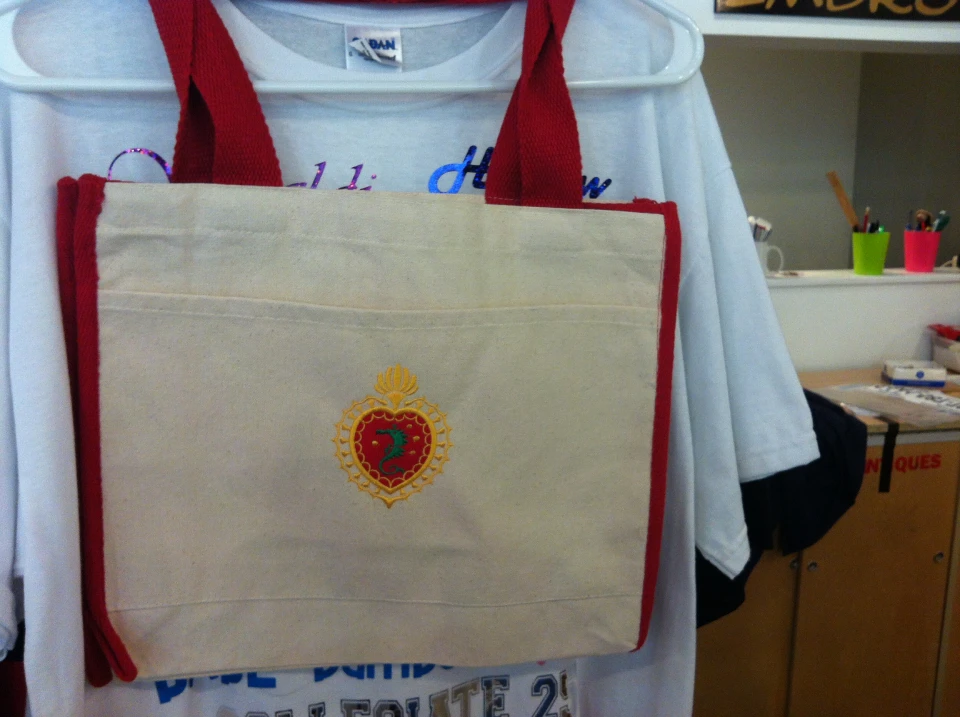The Art of Custom-made Needlework: Opening the Tricks to Creating Special and Remarkable Designs
The secrets to creating custom needlework styles that mesmerize the eye and leave a long-term impression lie in a fragile equilibrium of method, imagination, and interest to detail. As we delve into the globe of custom embroidery, we reveal the nuanced interaction in between string option, stitch complexity, and design personalization that elevates a plain garment to a work of art.
Choosing the Right Embroidery Threads
When choosing needlework threads, what key variables should you consider to ensure the best results for your custom-made designs? The choice of embroidery thread is critical in figuring out the final outcome of your embroidered design.
Additionally, the weight or density of the thread plays a considerable role in the appearance of the needlework. Thicker threads can include measurement and structure to your design, while finer strings are suitable for complex information and small message. Additionally, thinking about the color fastness and washability of the thread is important to guarantee that your custom styles preserve their quality and vibrancy gradually. By very carefully reviewing these variables and selecting top quality threads that fulfill your certain demands, you can boost the aesthetic charm and durability of your stitched developments.
Checking Out Different Stitch Strategies
To look into the world of 'Exploring Various Stitch Techniques', one have to understand the intricacies and subtleties that each stitching approach gives the art of needlework. Various stitch techniques not only add aesthetic interest however also add to the total appearance and dimension of the style. One prominent stitch technique is the satin stitch, which entails very closely packed parallel stitches to produce a smooth and glossy surface, suitable for filling in forms and creating strong lays out.
On the various other hand, the backstitch is a versatile method frequently utilized for laying out and adding fine information. It includes sewing in reverse to create a strong line of embroidery. Furthermore, the French knot stitch adds a tactile aspect to layouts, ideal for developing distinctive accents like blossom centers or decorative touches.
Discovering different stitch techniques enables embroiderers to play with light, shadow, and deepness within their layouts, elevating the visual allure and artistic high quality of their embroidery projects. By grasping different stitching techniques, one can open endless possibilities for creating one-of-a-kind and remarkable customized needlework items.
Incorporating Personalized Layout Components
Having checked out the details of different stitch methods such as the satin stitch, backstitch, and French knot, the emphasis currently moves towards including individualized design components in custom-made embroidery jobs. Personalized layout aspects play a critical function in making embroidery jobs really one-of-a-kind and unforgettable.
Another method to incorporate individualized layout elements is by including icons or themes that hold unique meaning to the recipient or show their interests and personality. Incorporating a favored blossom, pet, or hobby-related symbol anderson and sheppard suit price can make the needlework design a lot more meaningful and customized. Furthermore, choosing colors that reverberate with the recipient or line up with the designated theme can additionally enhance the personalization of the needlework task.
Understanding the Art of Shade Control

One trick element of shade coordination is understanding shade concept. This consists of knowing exactly how different colors connect with each other, the feelings they share, and how they can be Get More Information integrated to develop visually appealing styles. By using color concept principles, embroiderers can develop unified shade schemes that enhance the general appearance of the layout.
Furthermore, paying focus to comparison is critical in color sychronisation. Making use of contrasting colors can help particular aspects of the layout pop, boost legibility, and produce a visually dynamic needlework item. By understanding the art of shade coordination, embroiderers can elevate their styles and produce remarkable pieces that resonate with customers and visitors alike.
Enhancing Texture With Advanced Needlework Stitches
French knots, as an example, are perfect for adding little, elevated dots to your style, resembling the look of grains or creating a textured surface. Bullion knots, on the other hand, can be utilized to develop twisted, ropelike aspects that add a luxurious feel to the embroidery. Seed stitching involves little, scattered stitches that can complete areas with a speckled appearance, while turkey job creates cosy, dimensional accents reminiscent of animal fur or vegetation. Trying out these advanced needlework stitches enables you to push the borders of typical embroidery and develop absolutely unique and aesthetically appealing textures in your styles.
Final Thought
Finally, the art of custom-made embroidery involves a mix of selecting the appropriate strings, discovering numerous stitch methods, integrating customized design components, grasping color sychronisation, and improving texture with innovative stitches. By comprehending and executing these go to this site crucial elements, embroiderers can develop special and remarkable styles that display their imagination and skill. Needlework enthusiasts can unlock the tricks to developing lovely and bespoke items that stand out and leave a long lasting impression.